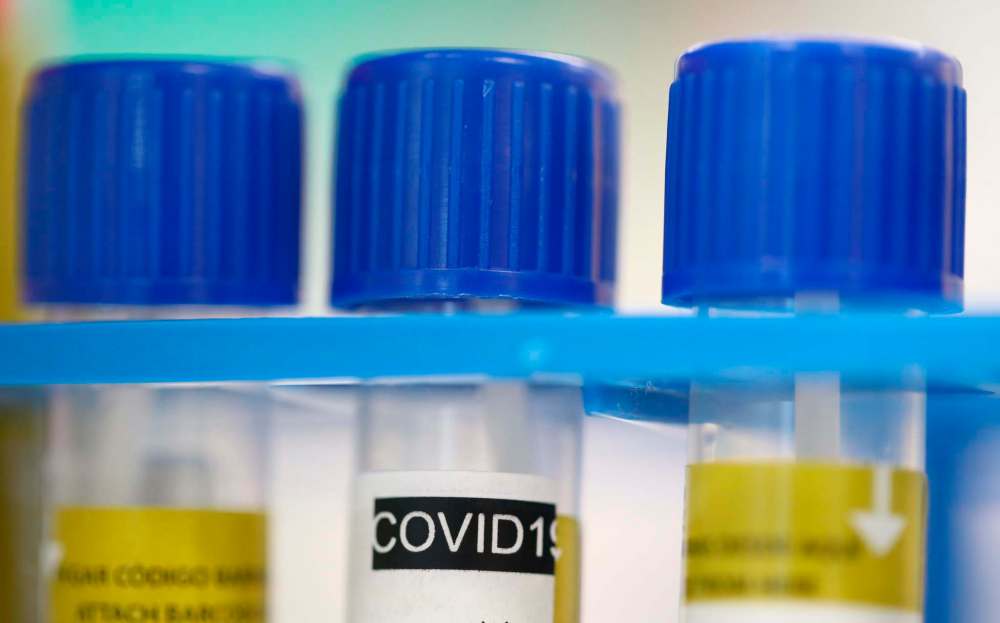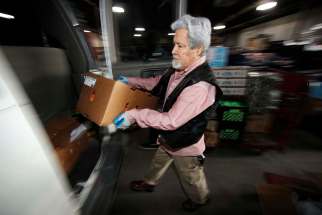Time to fight back We must think about offence as well as defence in fight against COVID-19
Read this article for free:
or
Already have an account? Log in here »
To continue reading, please subscribe:
Monthly Digital Subscription
$1 per week for 24 weeks*
- Enjoy unlimited reading on winnipegfreepress.com
- Read the E-Edition, our digital replica newspaper
- Access News Break, our award-winning app
- Play interactive puzzles
*Billed as $4 plus GST every four weeks. Offer only available to new and qualified returning subscribers. Cancel any time.
Read unlimited articles for free today:
or
Already have an account? Log in here »
Hey there, time traveller!
This article was published 23/03/2020 (1775 days ago), so information in it may no longer be current.
The key to wrestling COVID-19 to the ground is for governments to go on the offensive and directly attack the virus through aggressive testing and contact tracing, the World Health Organization said Monday. For provinces such as Manitoba, that means ramping up testing to identify cases, isolating infected people and testing contacts who are showing symptoms.
Social distancing, including shutting down businesses and demanding people stay home, is a critical part of a comprehensive plan to fight the disease, but on its own, it won’t bring an end to the pandemic, WHO officials say. Physical distancing is a temporary measure designed to slow the spread of the disease and reduce the chances of hospitals being overwhelmed. It helps “flatten the curve”, but social distancing is a defensive measure; it allows us to stay away from the virus. It doesn’t bring the pandemic to a conclusion. What will is going on the offensive.
“Asking people to stay at home and other physical-distancing measures are an important way of slowing down the spread of the virus and buying time – but they are defensive measures,” Dr. Tedros Adhanom Ghebreyesus, the WHO’s director general, said Monday. “To win, we need to attack the virus with aggressive and targeted tactics: testing every suspected case, isolating and caring for every confirmed case, and tracing and quarantining every close contact.”

Countries which have done so have seen success, he said.
That’s not a new message from the WHO. They’ve said it repeatedly. But as more countries – including Canada – adopt unprecedented social-distancing measures, the WHO says it’s time to step up offensive efforts and fight back directly against the virus.
That means far more testing, isolating sick people and tracking down their contacts. It means seeking out the virus instead of just avoiding it. The problem is that all regions face limited testing capacity. Like much of the world, Manitoba would love to test more, but doesn’t have the lab capacity. It has ramped up testing volumes in recent weeks, but it hit a backlog over the weekend (which it hopes to clear up over the next few days).
That limited lab capacity is causing confusion among some. Many with symptoms who don’t meet the international travel (and other) criteria can’t understand why they’re being refused a test. It’s understandable, but the province has to prioritize testing. In an effort to find out where the virus is, they have to test where it’s most likely to be.
Manitoba isn’t alone. The WHO strongly urges all governments to test those at highest risk first.
So far, Manitoba has done about 4,300 tests. Only 20 have returned positive. It may not seem like a lot of testing, but considering the virus was identified Jan. 7 and the genome sequence was shared with the WHO and the world on Jan. 12, the rate of testing that has since taken place worldwide for a new virus is remarkable, according to the WHO.
“I don’t think any of us have ever seen the speed at which testing has been developed for a novel pathogen,” said Dr. Maria Van Kerkhove of the WHO. “Of course we always need more testing, of course we always need more labs, but that’s the case for every pathogen, especially an emerging pathogen.”

The challenge for all governments now is to increase lab production and increase the volume of testing further, so we’re not fighting the virus “blindfolded,” said Van Kerkhove.
It’s all the more reason individuals have to do their part by staying home, practising social distancing, not hanging around in groups (even outside) and taking all the precautions our public officials have been preaching for weeks. If we don’t, health officials won’t be able to ramp up testing fast enough to keep up with the spread. We’ll rely too much on a defensive strategy and not enough on an offensive one.
We need to go on the offensive. We need to go after this thing head-on. Everyone has to do their part to make that happen. We have the technology, the know-how and the resources. What public health officials don’t have is time. Manitobans can give them that time by staying home.

Tom Brodbeck
Columnist
Tom has been covering Manitoba politics since the early 1990s and joined the Winnipeg Free Press news team in 2019.
Our newsroom depends on a growing audience of readers to power our journalism. If you are not a paid reader, please consider becoming a subscriber.
Our newsroom depends on its audience of readers to power our journalism. Thank you for your support.








